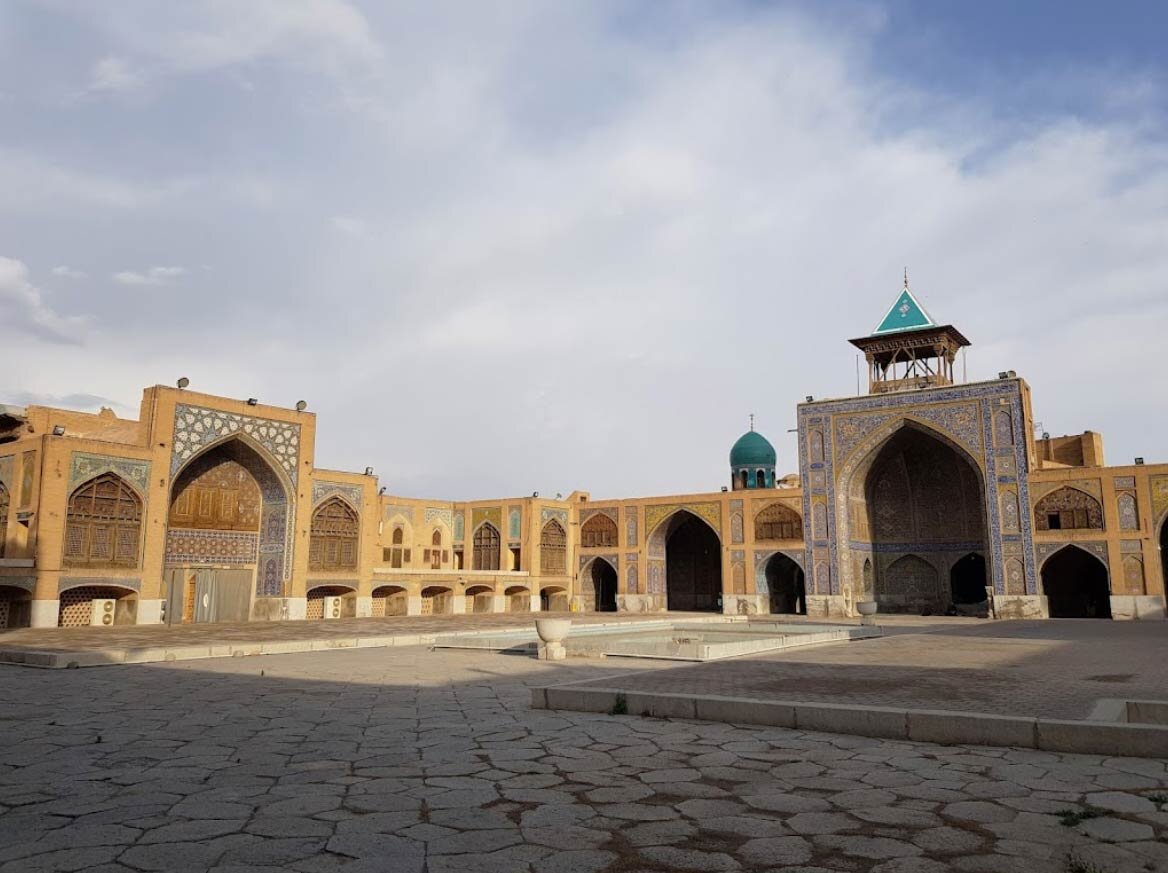Seyyed Mosque: restoration in progress but unified efforts essential

TEHRAN – Isfahan’s cultural heritage directorate has begun restoration work on the Seyyed Mosque, which is under significant stress due to landslide forces. However, unified efforts by all stakeholders are crucial to safeguard this 19th-century monument.
On Sunday, the directorate’s chief, Amir Karamzadeh, detailed the scope of ongoing restoration efforts during his visit to the mosque.
Emergency repairs to the main dome structure, restoration of the intricate tile work, ceiling repairs, refurbishment of wooden decorations, and thorough cleaning of the mosque’s valuable architectural embellishments are currently underway, the official explained.
These efforts are carried out by senior experienced restorers and experts under the supervision of the Ministry of Cultural Heritage, Tourism, and Handicrafts, he said.
“The Seyyed Mosque, spanning over 8,000 square meters, is a distinguished example of Qajar-era architecture, inspired by the grand mosques of the Safavid period, such as the Imam Mosque.”
The mosque has unfortunately suffered significant damage due to a lack of regular maintenance, necessitating immediate and comprehensive restoration measures, the official said.
Karamzadeh emphasized the collaborative nature of the project, noting that the Seyyed Mosque is not solely under the administration of the Cultural Heritage Department but is also utilized by multiple entities, including the Endowments and Charity Affairs Organization. “We expect all stakeholders to unite in their efforts to protect this historic mosque,” he stated.

Additionally, Karamzadeh highlighted ongoing projects initiated last year, which include the repair of the dome’s roof and reinforcement of the dome’s foundations, which had suffered severe cracking. The department is actively organizing meetings with the mosque’s various beneficiaries to ensure a collective approach to the conservation of this significant historical and religious monument.
Historical accounts indicate that the land for the Seyyed Mosque was purchased during the Safavid era, under the reign of Shah Sultan Hossein, but construction was delayed due to the Afghan invasion. Later, during the reign of Mohammad Shah Qajar, the mosque was commissioned by Hojjat al-Islam Shafti, a wealthy religious figure.
Construction began in 1825 and took 130 years to complete, including both building and decorating. The Seyyed Mosque is the fourth congregational mosque and the most spacious Qajar-era religious building in Isfahan. It significantly benefited from the flourishing architectural style of the Safavid period and the exemplary decorative art of the Qajar epoch.
A key distinction of this mosque is its dual function as both a mosque and a school. In other mosques, like the Jameh Abbasi Mosque, the school is a separate area adjacent to the building. However, in the Seyyed Mosque, no separate space was designated for student education. Therefore, the architecture was designed to accommodate students, featuring elements like vertical sash windows, which are more common in houses.
The most spectacular part of the mosque is on its southern side, topped by a clock tower and consisting of two columned prayer halls (Shabestan) and an altar (Mihrab) adorned with eye-catching tile art. The tiles feature floral patterns and landscape images reminiscent of European masters’ works.
AM
Leave a Comment